Luke has been putting Canyon's uncompromising enduro race bike, the Strive CFR Underdog, through its paces over the past year. In the latest update of his long-term review of the Strive, our MTB technical writer flies out to Whistler in British Columbia to tick off a bucket-list ride.
Canyon Strive CFR Underdog update three
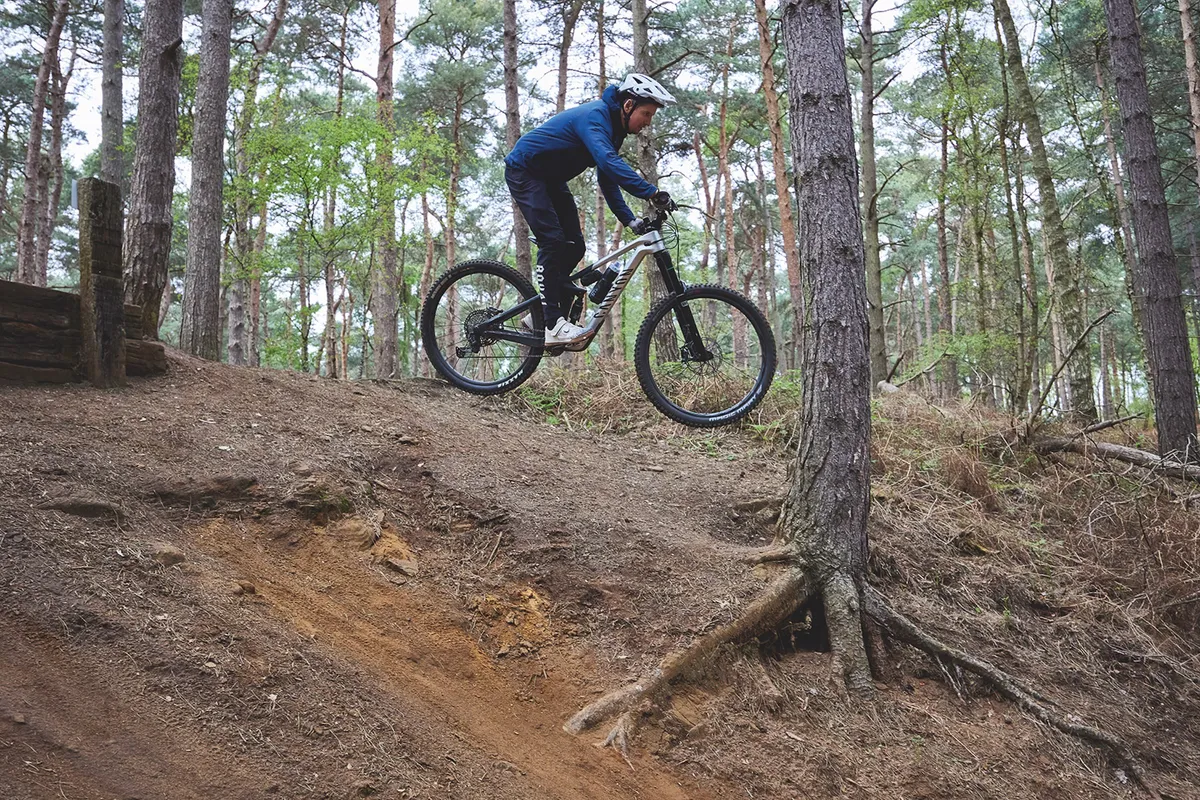
I hit the mountain biker's jackpot when I was invited to Whistler, Canada, to test out a few hot-off-the-press products ahead of their official launch. Among them were the latest RockShox BoXXer fork, Trek's revamped high-pivot Slash and Santa Cruz's first lightweight ebike, the Heckler SL.
As if that wasn't thrilling enough, I also had my trusty Strive along for the ride, ready for action when I wasn't testing new kit. The Strive was fitted with some exciting upgrades of its own. First up were the Reynolds Blacklabel 329 Trail Pro wheels wrapped with Cushcore's Trail inserts to shield against Whistler's notorious rocky terrain.
Then, there was EXT's latest development in the form of the ERA V2.1 fork, boasting a brand-new air spring with a larger negative chamber, a smaller ramp-up chamber and upgraded bushings to elevate sensitivity without sacrificing the impressive support it's known for.
Our journey kicked off on Whistler Peak with the iconic Top of the World trail. It's renowned as the starting point for one of the lengthiest enduro stages in the sport's history and it's an absolute beast, strewn with chunky rocks and blown-out bumps.
Lord of the Squirrels

The Strive felt right at home as it gracefully navigated the rock-strewn trail, even as I often clumsily slammed the bike toward the tree line. The Blacklabel wheels offered precision and control, all without transmitting bone-rattling harshness.
The fork and inserts certainly pulled their weight, making the whole experience a testament to the idea that a good bike truly is the sum of its components.
Further down the trail, we veered away from the main routes and explored some of Whistler's less-travelled hand-cut trails. While the hill wasn't the steepest overall, some of the chutes and rock rolls made my heart skip a beat.
I couldn't have been happier with the Strive's slack geometry and the ERA V2.1's tall ride height as I emerged from these features with wide smiles and laughter.
That first morning ticked off a major bucket-list ride, but my adventure wasn't confined to lift-assisted trails. I joined a group to conquer the infamous Lord of the Squirrels, a gruelling single-hit ascent of 1,300 metres, followed by a relentless and undulating descent.
The Strive handled every inch of it with ease, and the Shapeshifter feature proved invaluable for the long pedalling stretches and tricky, undulating descent.
Throughout the week, the Strive proved itself time and again, with just one hiccup when the chainring decided to rattle loose. Whether it was carving up the bike park trails, venturing off the beaten path, or tackling epic adventures, the Strive revelled in the challenging terrain of Whistler.
It was an absolute blast.
Canyon Strive CFR Underdog in brief
The latest Canyon Strive is the brand's no-holds-barred enduro bike. It's been built with an uncompromising frame designed for the world's fastest riders to take on the toughest enduro races.
Canyon set out to take the Strive back to its roots as a race bike, having previously covered numerous bases as the brand's only long-travel 29er. With the introduction of the latest Spectral 29 and Torque 29, Canyon had the space to dedicate the Strive CFR fully to its racing pedigree.
Canyon has overhauled the geometry and frame stiffness, giving the Strive CFR its uncompromising character.
One feature that Canyon kept was the bike's Shapeshifter. This air-powered piston adjusts the geometry, travel and suspension leverage curve to add versatility and help the Strive be more well-rounded. It's designed to turn the enduro beast into a trail monster.
Because the Strive is a thoroughbred, it's only available with Canyon's top-spec CFR carbon fibre. There are no 'fewer frills' frame options, although there are three build specs to choose from. The Strive CFR Underdog here is the least expensive model.
Older updates follow
Canyon Strive CFR Underdog update two
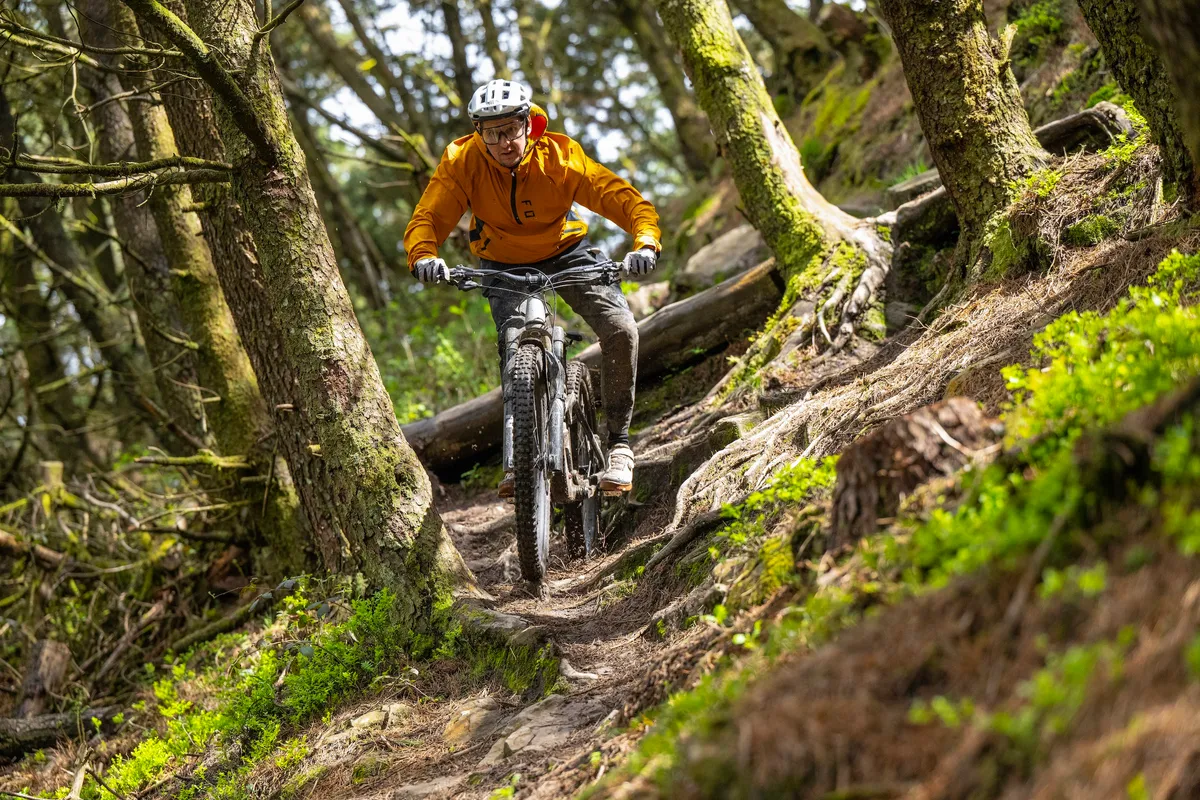
I count myself extremely fortunate to have the opportunity to test various bikes as part of my work. Still, every time I swing a leg over the Strive CFR Underdog, I can't help but feel an infectious excitement. It's become my trusty companion for product test rides, and it never disappoints.
You'll likely catch a recurring theme in my updates – I'm always impressed by the Strive's low-slung bottom bracket and its ability to stay planted as if it's glued to the ground. The confidence this ride character delivers is thrilling, and it has helped me channel that inner clipless Sam Hill I'm hunting.
To combat the threat of unwanted pedal strikes, I kitted the Strive out with Hope's EVO 155mm cranks. Hope doesn't hold back with its claims – lighter, stiffer, quicker acceleration, and improved pedal clearance. But the big one is how they redistribute the rider's weight when standing up, enhancing stability by having both feet closer to parallel.
The promised quicker spin-up and enhanced pedal clearance are immediately noticeable. Pedal placement in technical trails is easier, as are off-camber sections where I can more often sneak in a quick pedal stroke. Pedal-precise climbs are more simple too.
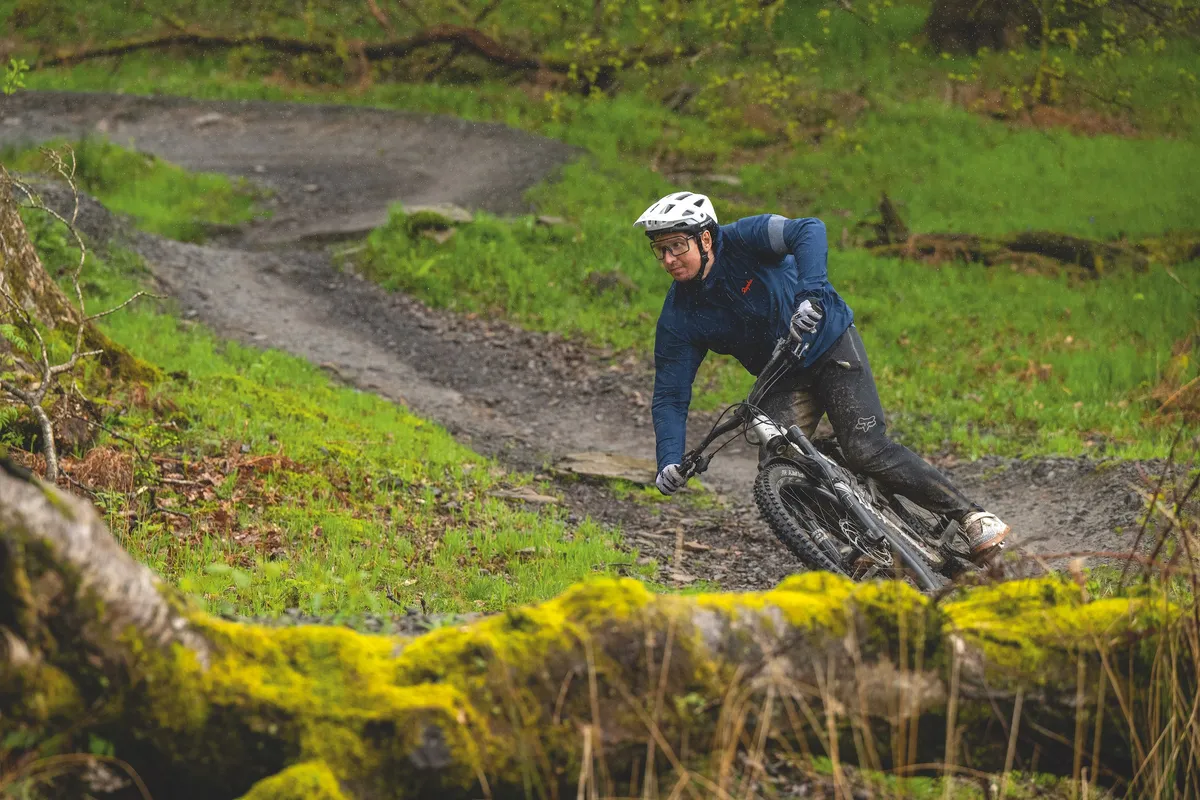
Hope suggests a slightly smaller chainring, and that makes sense – less crank lever arm needs more rider power to produce the same pedalling torque.
The shorter crank arms took some getting used to. The cadence is higher, and it feels s if there's less time for power delivery during each stroke. Yet, my legs adapted quickly enough.
As for weight, the set I tested weighed in at a respectable 592g – cranks and a 30t chainring combined.
However, I didn't notice a significant boost in riding stability or a significant transformation in my body position. The hip joint is incredibly articulate, and I didn't feel dramatically different while using them.
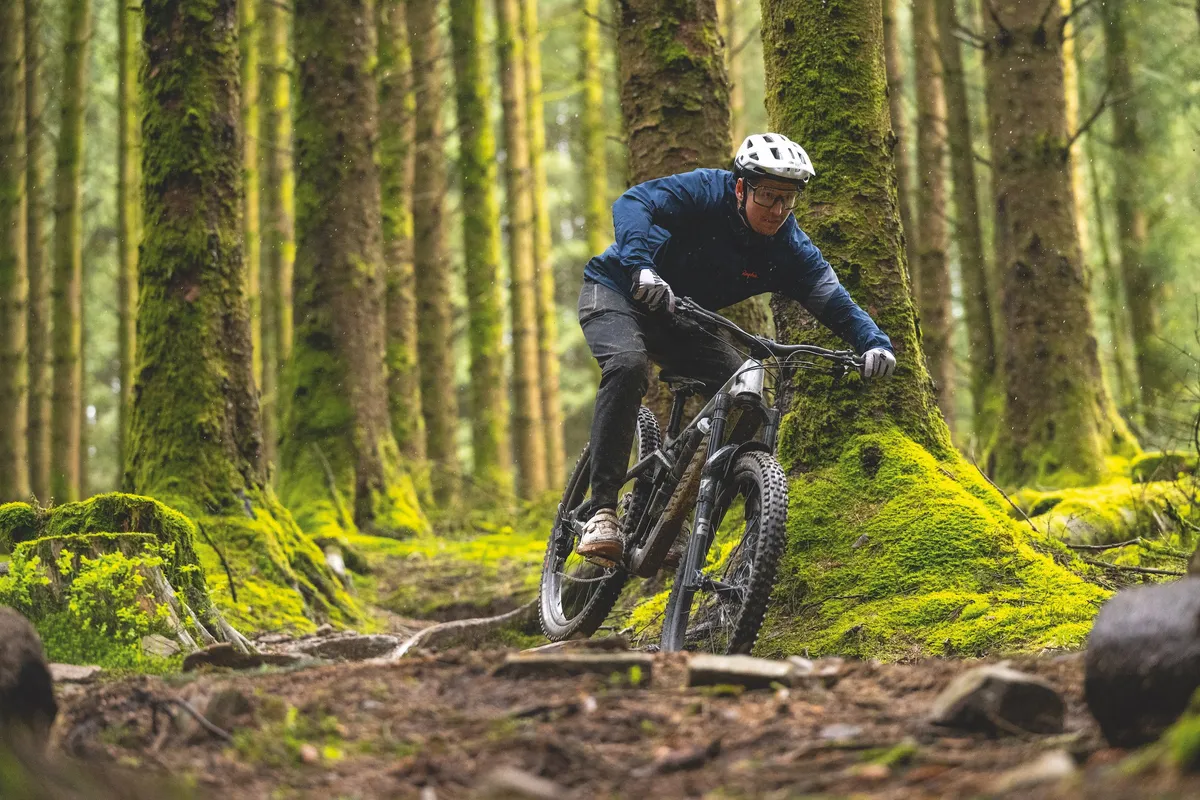
There are plenty of benefits in the right terrain, however for the riding I do most often, these cranks aren’t a must-have. That said, I might dabble with a 160mm option to find that sweet spot.
Apart from this, the Strive has been a trusty companion on the trails. If there's one gripe I have, it's the 20-degree freehub engagement on the DT Swiss 370 LN hubs that come as standard.
It feels a tad sluggish on the trail and doesn't quite give the bike that zippy, sporty feel. But this could be partly because it's a 160mm-travel enduro bike. Let’s see what the next couple of months hold.
Canyon Strive CFR Underdog update one
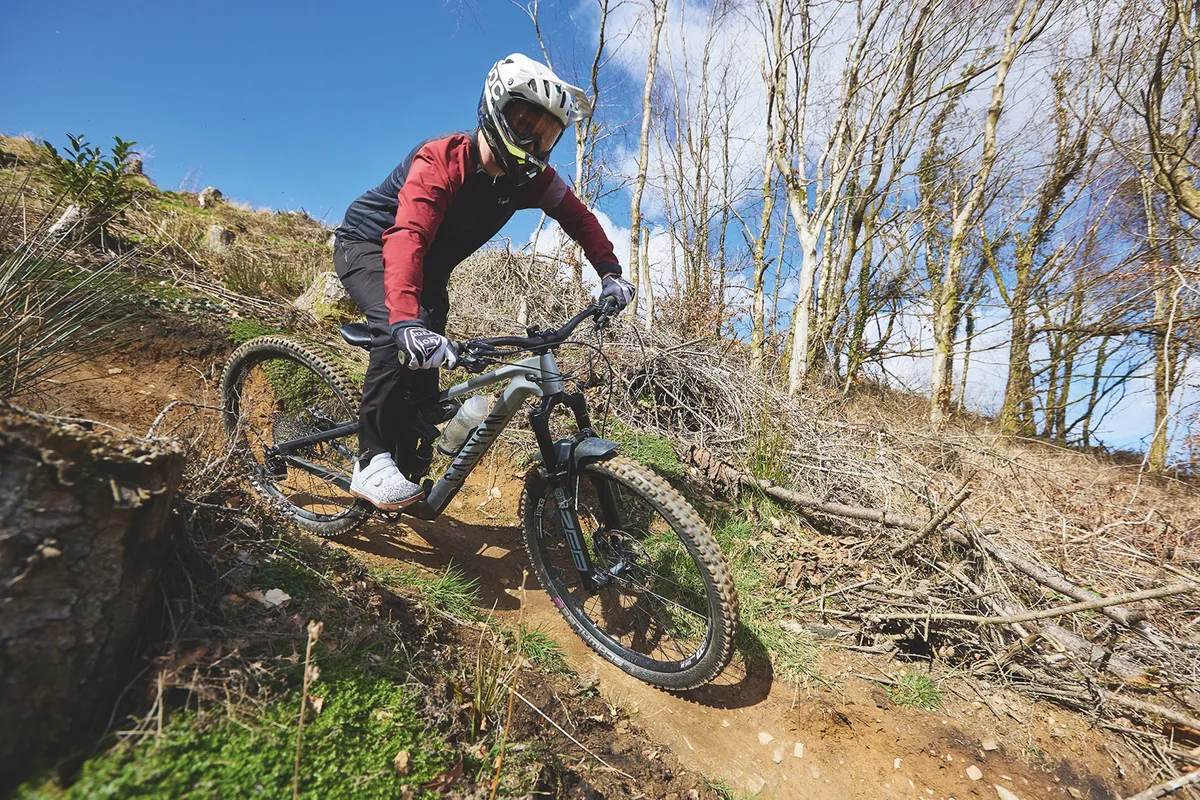
So, after getting comfortable on the Strive and swapping out the contact points for my personal favourites, including the handlebar and saddle, I've been able to ride the Strive for a while without needing to change anything urgently.
As I've mentioned, the Strive is happiest when pushed hard and isn’t an easy cruiser. This is fine if you want to race full-gas all the time, everywhere. However, the stiff frame can be a bit of a handful for everyday riding.
I am all about comfort, and fortunately, I have just carried out a 170mm-travel enduro forks group test –the perfect forks for the front of the Strive.

I had heard good things about the new DebonAir spring for the RockShox ZEB fork. So, I whipped out an older Charger 2.1 damper from a previous ZEB fork and fitted that damper into the ZEB Select I had tested with the new spring.
This will hopefully give me more comfort at the front of the bike compared to the Fox 38 Performance Elite fork that comes as standard on the Strive CFR Underdog. I’ve always felt it was overdamped for my 75kg weight.
I was a big fan of my new RockShox setup. The older damper and new spring are a great combination to add a touch more support to the ZEB, so it rides a little higher in its travel. However, it still has the suppleness and plush feeling I know RockShox for.
I recommend upgrading to the DebonAir spring if you have an older ZEB. Especially if you want a touch more support at the front end.
This change has helped the Strive for sure. Feedback through the bars is reduced, and I can ride with a new level of comfort that is giving me more confidence in corners and across root spreads or off-camber sections.
Not that the trails I ride often are super-long, but I’m pretty sure this swap has made the bike less fatiguing – and I’m all about that!
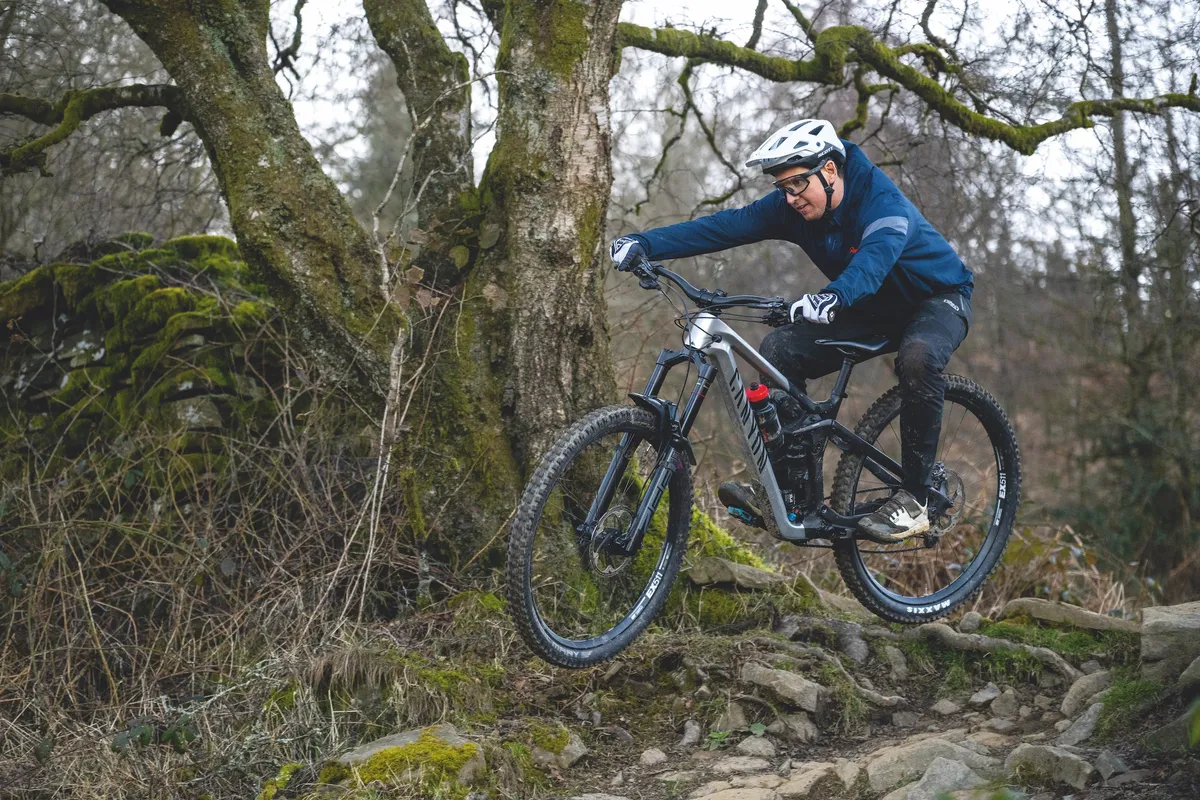
I’m sure I’m still not getting the most from the rear shock, but I’ll have to figure that out another time.
The rest of the bike is holding up well, with no issues so far – the Shapeshifter is still going strong.
I like riding the Strive. It’s always got my back, hunkering down to the ground and pushing me to open the taps.
I like the low bottom bracket too, but it could be a little higher, to enable riding without being concerned about pedal placement. It means I must learn to ride with my pedals lever more often and channel my inner Sam Hill. Bring that on!
Canyon Strive CFR Underdog specification and details
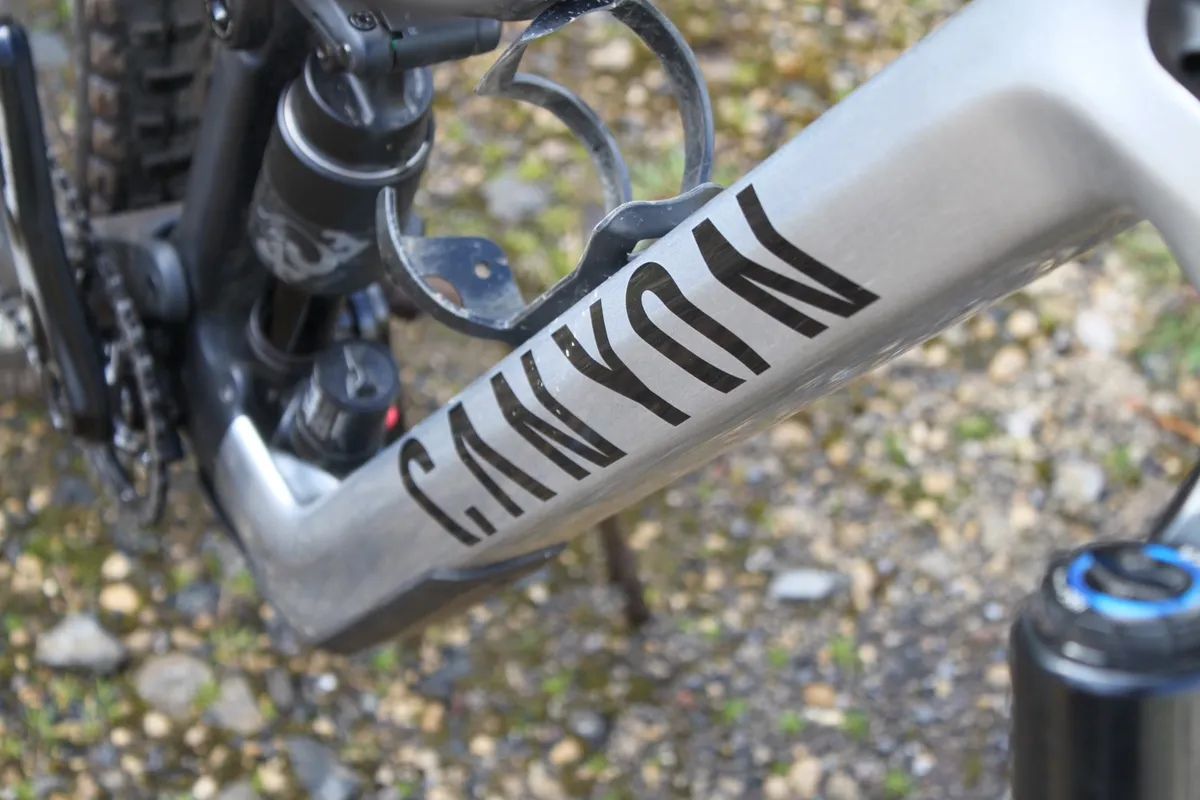
By refining the tube profiles and carbon layup, Canyon was able to make the Strive CFR's front triangle 25 per cent stiffer than the previous model.So, what is going on 'under the bonnet' with the Canyon Strive CFR Underdog?
Using higher-spec carbon and refined tube profiles, and subtly adjusting pivot locations, Canyon increased front-triangle lateral stiffness by 25 per cent for a 300g weight penalty over its old Strive.
This change to the front-triangle stiffness aims to keep the bike more stable and composed at speed. The rear triangle has a similar stiffness to maintain tracking and grip.
Purely from a speed perspective (because this is a race bike), Canyon has stuck to 29in wheels due to their ability to keep momentum and help improve grip.
Other frame details include a bottle and tool mounts in the front triangle, and Canyon has forgone internal frame storage. As you'd expect, there's plenty of frame protection and rubber-housed internal cable routing.
Canyon Strive CFR Underdog suspension
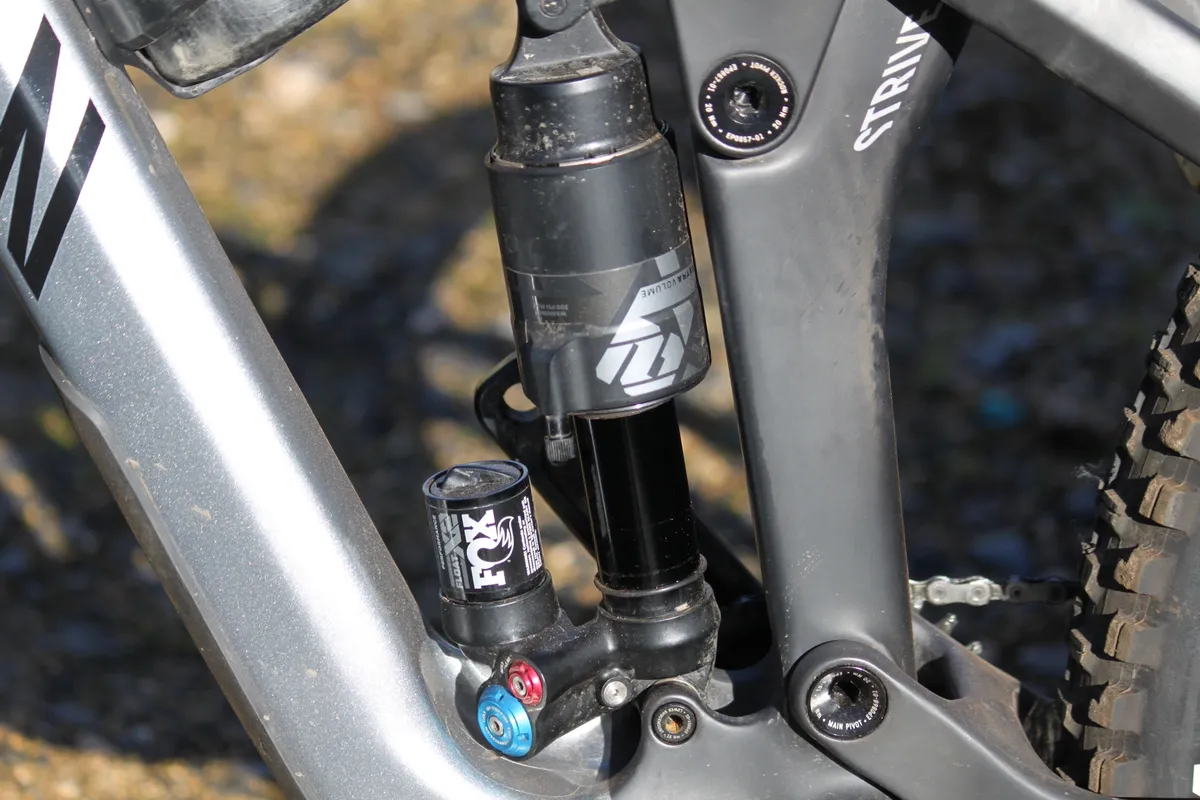
The Strive CFR Underdog dishes out 160mm of travel. Canyon has tuned the beginning stroke of the travel to be more supple to hunt grip, add composure and minimise fatigue.
Due to the extra suspension and increased sensitivity, Canyon upped the anti-squat at sag over the previous bike to help the Strive CFR climb proficiently.
However, by having the anti-squat drop off rapidly through the travel, Canyon has aimed to minimise pedal kickback to give the Strive a more chainless feel as you ride deeper in its travel.
Canyon says the frame is compatible with a coil and air shock and has been designed around a 170mm-travel fork.
Canyon Strive CFR Underdog spec

The Strive might be an underdog by name, but it's not an underdog by spec. This model has a Fox 38 Performance Elite fork and Fox Performance X2 shock.
It gets plenty of Shimano treatment with a 1x12 Deore XT drivetrain and Deore XT brakes.
It rolls on DT Swiss EX511 rims, laced to DT Swiss 370 LN hubs shrouded with Maxxis Assegai 3C MaxxGrip EXO 29×2.5in WT front and Maxxis DHR II 3C MaxxTerra EXO 29×2.4in WT rear tyres.
Canyon uses its G5 products to complete the build kit, with its alloy bar, stem and dropper post. The bike is finished with an Ergon SM10 Enduro Comp saddle.
Canyon Strive CFR Underdog full specification
- Sizes (*tested): S*, M, L, XL
- Weight: 15.41kg, S size without pedals
- Frame: CFR carbon fibre, 160mm travel
- Shock: Fox Float X2 Performance
- Fork: Fox 38 Performance Elite GRIP2, 170mm travel
- Shifters: Shimano Deore XT (1x12)
- Derailleurs: Shimano Deore XT (1x12)
- Cranks: Shimano Deore XT (1x12)
- Wheelset: DT Swiss EX511 rims on DT Swiss 370 LN hubs
- Tyres: Maxxis Assegai 3C MaxxGrip EXO 29×2.5in WT (f), Maxxis DHR II 3C MaxxTerra EXO 29×2.4in WT
- Brakes: Shimano Deore XT, 203mm rotors
- Bar: Canyon G5 AL, 780
- Stem: Canyon G5, 40mm
- Seatpost: Canyon G5, 150mm
- Saddle: Ergon SM10 Enduro Comp
Canyon Strive CFR Underdog geometry
At the heart of the Canyon is geometry that's very much at the progressive end of the enduro bike spectrum with some quite out-there numbers.
The size-small bike I ride has a 455mm reach, equivalent to most brands' medium frames. Short riders might struggle with frame sizes. As a reference, the medium frame has a 480mm reach.
The Strive features adjustable headset cups. These enable you to increase or decrease the reach by 5mm to fine tune the sizing for yourself.
The reach is complemented by a short 435mm chainstay length across the board.
It has a slack 63-degree head tube angle and a moderate 76.5-degree effective seat tube angle in its shred mode.
The stack height is a sensible 629mm on the small, which should help riders feel confident on steep descents.
The seat tube is a short 400mm with enough insert length to run a 180mm dropper post. The Strive CFR also sits very low with a ground-hugging 36mm bottom bracket drop. Canyon clearly had the terms long, low and slack in mind with the Strive CFR.
The Strive's party trick
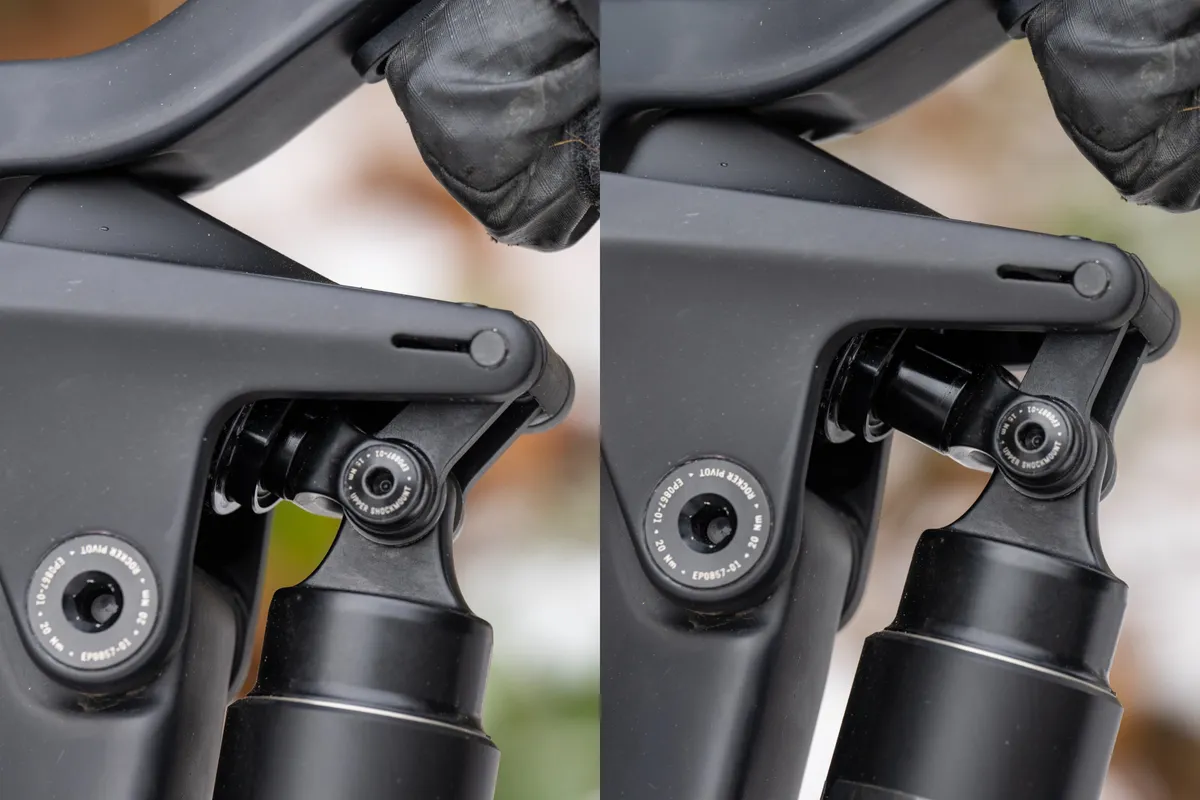
While the numbers above are extreme, the Strive has a party trick to help it become more versatile. With a flick of your thumb, you can drastically change the Strive CFR's characteristics.
The Shapeshifter uses an air piston to reposition the shock in the frame's rocker link. This changes the geometry of the Strive and turns it into a much more trail-friendly ride.
It steepens the head tube and effective seat tube angle by 1.5 degrees to 64.5 degrees and 78 degrees, respectively; much more manageable numbers on mellower terrain. It also raises the bottom bracket by 15mm, which should help reduce pedal strikes. This is a good thing because it's the setting you'll most likely do any extended pedalling in.
As the Shapeshifter moves the shock, the suspension leverage rate changes, firming up the rear end to improve its pedalling traits. It also limits travel to 140m, so this clever little device effectively gives you two bikes in one.
Canyon has one more trick to tailor the Strive CFR's geometry. The frame's head tube uses adjustable headset cups that enable you to adjust the reach. You can shorten or lengthen the stock reach by 5mm. I can choose reach numbers between 450, 455 and 460mm for the size small.
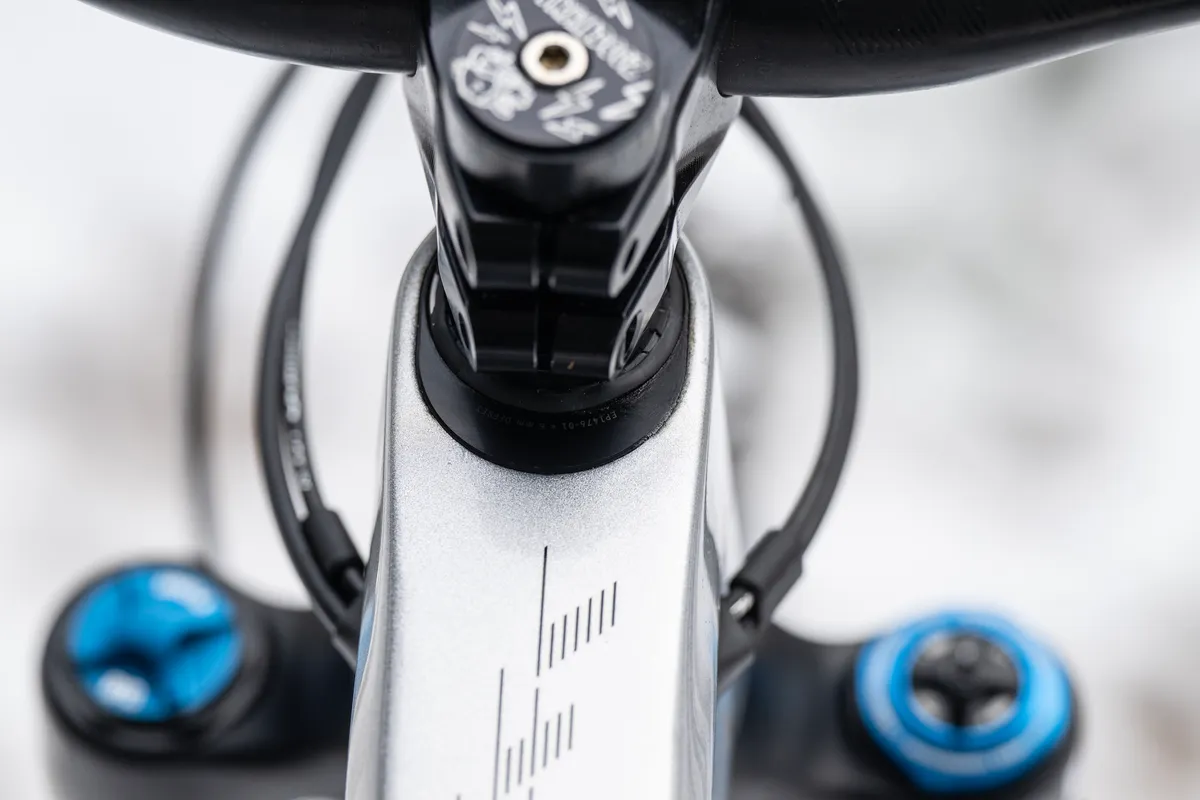
Why did I choose the Canyon Strive CFR Underdog?
It's no secret I have an appetite for gravity-based riding. Since starting at Mountain Biking UK and BikeRadar, I've always chosen an enduro bike for my long-term test rides.
It's the closest thing I can get to a downhill bike and still be practical for 90 per cent of my riding.
The Strive caught my eye with its low-slung and slack geometry. A lower bottom bracket was the one thing I would have liked to change about my previous long-term bike, an Evil Insurgent.
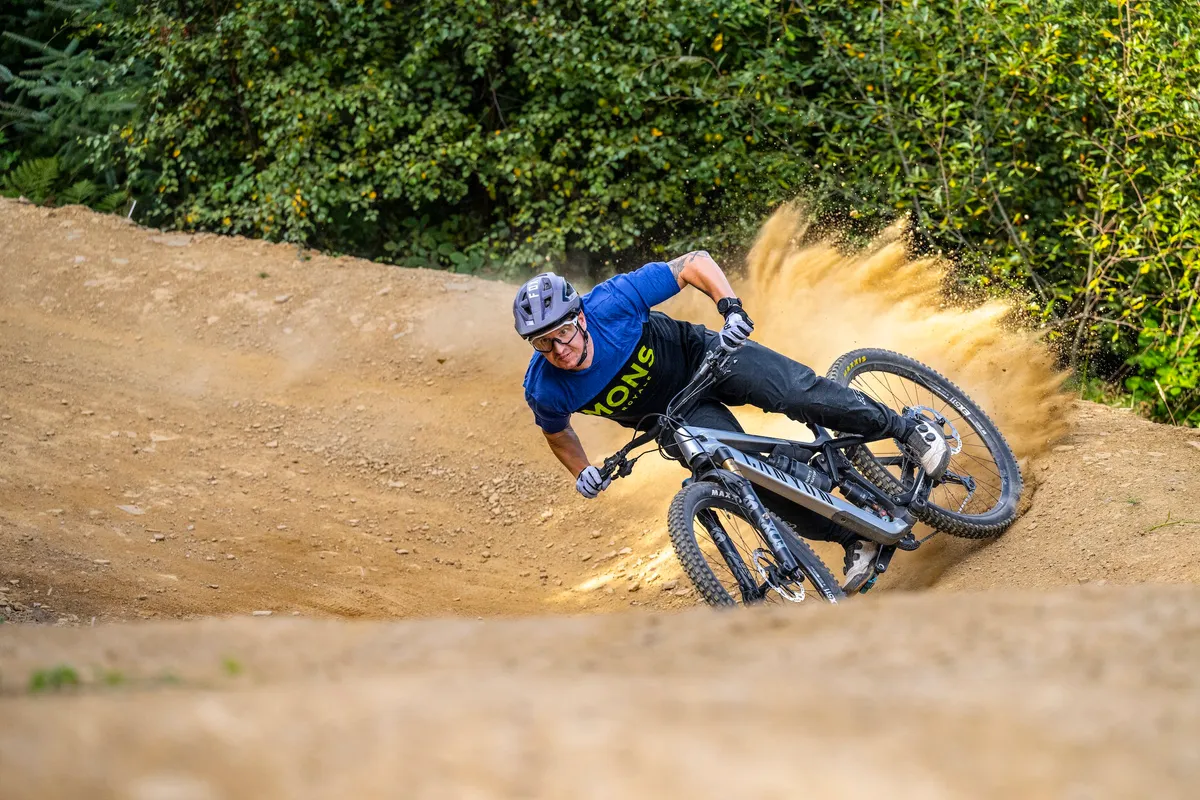
The Canyon ticked many boxes: interesting geometry, a competitive price-to-performance ratio and its Shapeshifter. I was fortunate to test the higher-spec Strive CFR last year and was thoroughly impressed. So, I was keen to try the cheaper model to see how well that would perform.
I already knew the bike was happiest when being pushed to its limits. I now want to see how it handles the every-day duties of a slower, wetter UK winter rather than the dry, dusty, fast trails I rode in Italy.
Is it just for the race course or can a weekend warrior get the best out of this bike too?
Canyon Strive CFR Underdog initial setup
With the spec on the bike hitting the mark, there was no need to quickly change any parts, and I could ride the bike straight out of the box without fuss.
I went to my usual setup with the Fox 38 Performance Elite fork (a Fox 38 with a GRIP2 damper is a fork I'm familiar with). I ran 88psi in the spring with two volume spacers, and the high- and low-speed compression fully open.
For the rebound, I ran high-speed damping seven clicks from closed out of nine and nine clicks out of 16 from closed for the low-speed.
I set the shock to 160psi, which gives me 30 per cent sag at the shock. I ran the low-speed compression fully open and the low-speed rebound 14 clicks from closed out of 19 for my preferred feel.
With the Strive's proportionate stack height, I could easily get the bar height to my preferred feel (which measured 108cm from the floor) by shuffling some spacers around (measured from the ground to the centre of the diameter of the grip at the end of the bars).
The only issue I had with the bike was the 150mm G5 dropper post because it doesn’t have enough travel for me. I had to keep adjusting the height of the post at the top and bottom of the trails to set it to my preferred position for pedalling and descending.
This might not be a problem for most people on the size small. However, I have an oddly proportioned body with long legs and a short torso for my 173cm, and ride with an unusually high saddle for my height.
Canyon Strive CFR Underdog ride impressions
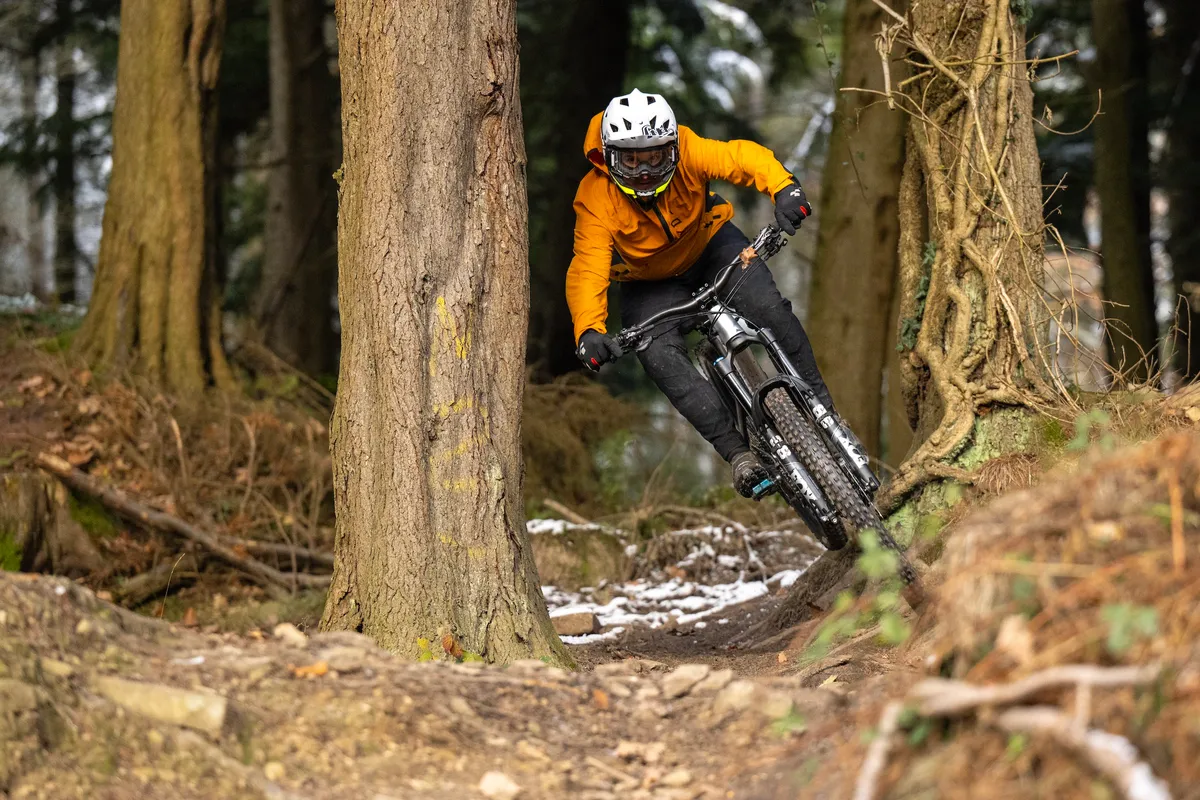
Canyon delivered the bike set up tubeless, saving me a chore.
Over the winter, the Strive has seen plenty of laps around the Forest of Dean, some of South Wales' finest off-piste and riding at one of my favourite spots, Triscombe in the Quantocks.
The first thing you can tell about the Canyon is it excels at going fast. That low bottom bracket and slack head tube angle give plenty of stability, providing a sure-footed platform to move around the bike and easily lean it from side to side.
This planted feel gives you plenty of confidence in the turns and delivers ample traction. When it does slide, it does so with control. The snappy chainstays also enable you to generate speed pumping through turns and accelerate out of deep berms and compressions.
This is an impressive bike in the corners, especially those flat, unsupported turns where grip is essential.
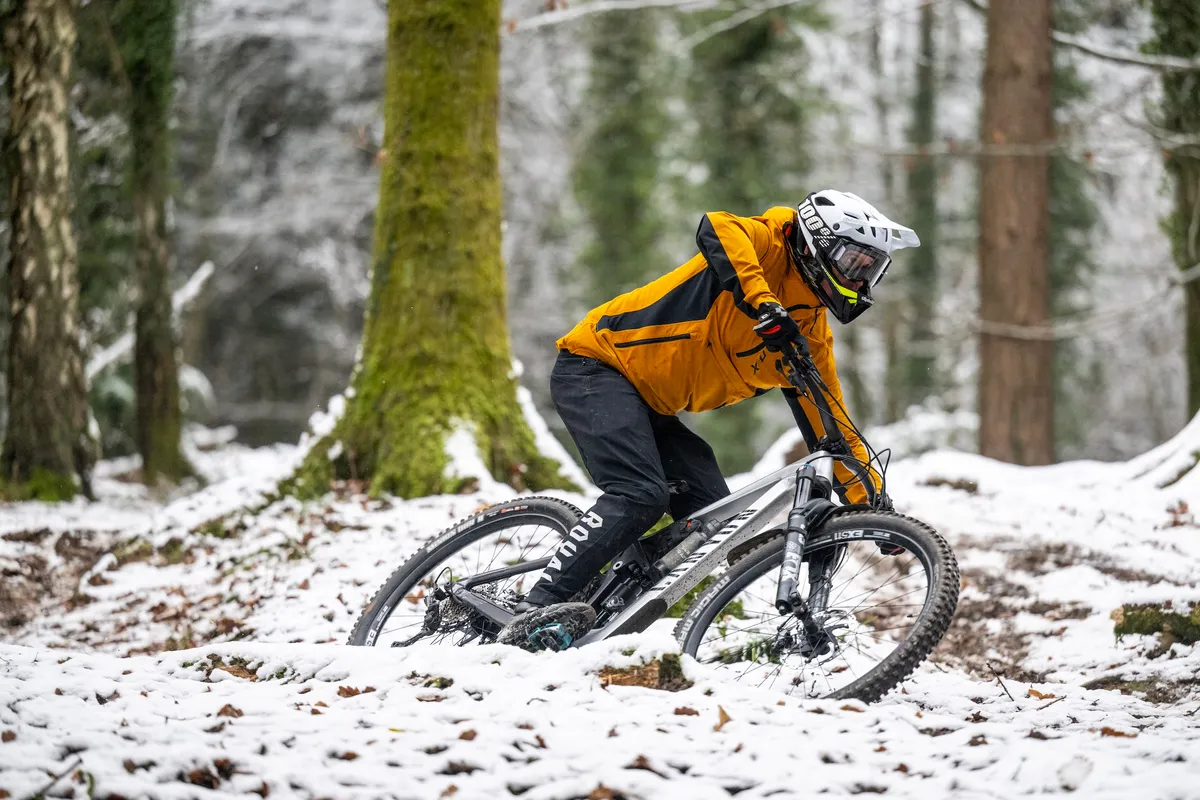
However, the Strive can seem bored on mellow or slower trails. It feels like a race car that needs a certain amount of speed to work properly. When riding gently, the Strive’s stability makes the trails feel less engaging.
The fork is heavily damped and better suited to high-speed work rather than slow, technical riding. The same can be said for the shock. It feels a little harsh on slower, rougher trails and thuds along rather than plushly soaking up the trail.
Once the speed picks up, it comes alive, but it could be better at slow, big hits. When I inevitably ride into a large, square-edge bump, such as a sizeable rock, root or bump without tons of speed, there’s feedback that comes through the bike, as if the shock isn’t supple enough.
The frame's stiffness was hard to gauge in the mud and slop of the winter, but we had a very dry February where it was easier to get a feel for the frame once the trails dried out.
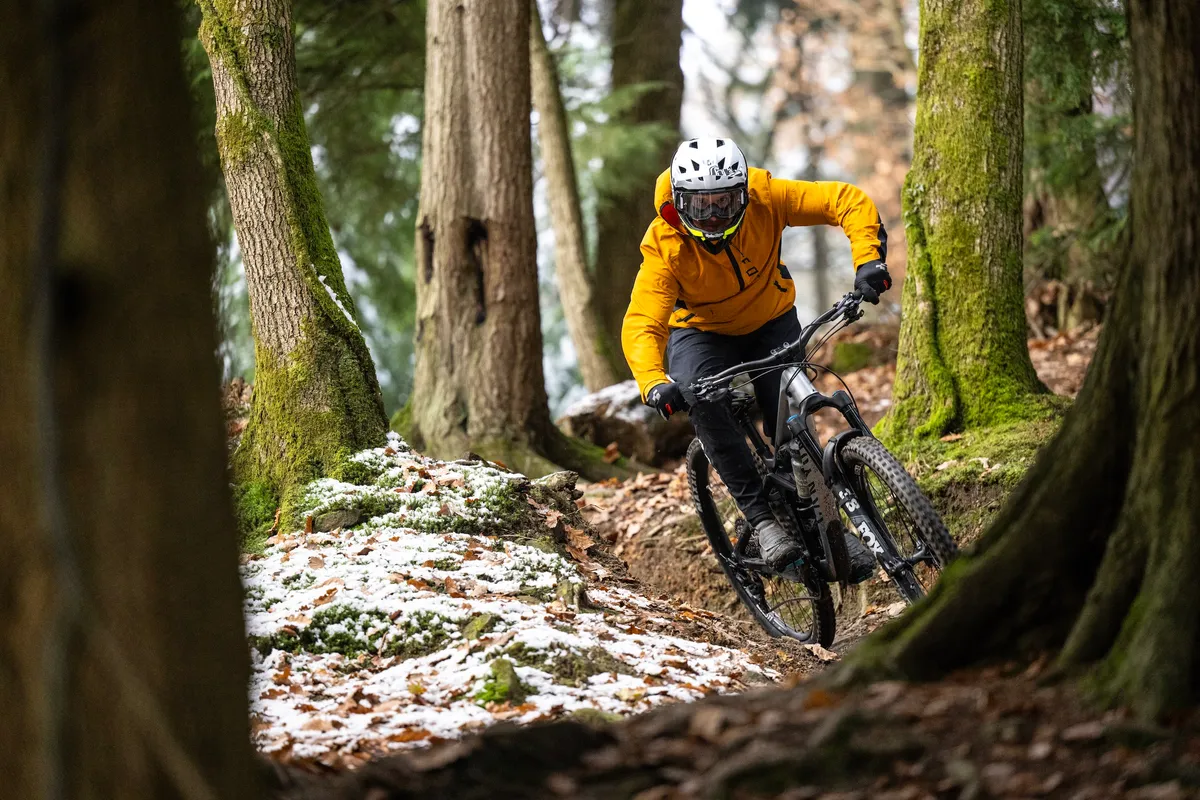
Here, you can tell it has direct and sharp handling. It's reactive to rider inputs but needs some control to keep charging where you want it to go. Don't expect this to be a forgiving ride. Still, if you can maintain a good body position on the bike and point it where you want to ride, it will go there accurately and quickly.
What helps on slower, more mellow trails is to take advantage of the Shapeshifter. The more agile geometry and firmer rear end give another lease of life to the bike that's happy to tackle more moderate tracks.
The fact you can do this at the push of a button is even better. Also, you can switch this up on different sections of the same trail, which is even better. It takes a little getting used to, and sure, I pressed the dropper lever a few times by mistake, but it took little time to figure out.

It makes a significant difference in climbing back to the top of the hill. The firmer pedalling platform and steeper geometry sit me comfortably and make pedalling more efficient.
Canyon Strive CFR Underdog upgrades
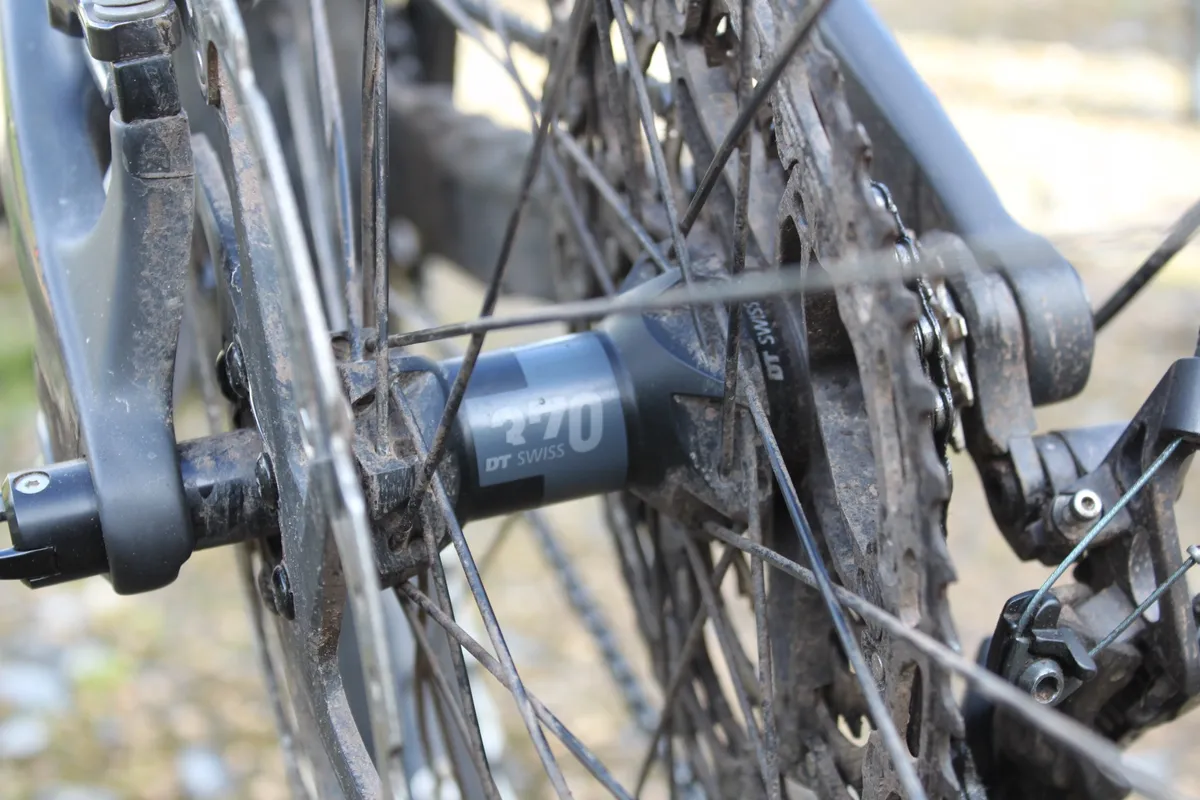
The only issue I've found with the Strive CFR Underdog is I don't like the 20 degrees of freehub rotation from the DT Swiss 370 LN hub. However, you can get a freehub upgrade to improve this, so you don't need to buy a new rear wheel to change it.
The only other things I changed quickly were the grips. The rubber on the Canyon G5 grips was too firm for my preference. Fortunately, that's not a dramatic expenditure.
The Shimano Deore XT kit is a workhorse and has taken the winter in its stride. The brakes are powerful and sharp, which I like, and I haven't had any wandering bite-point issues.
Having spent years riding bikes with SRAM drivetrains, I'll admit to preferring the spread of Shimano 1x12 cassettes. It makes using second and third gears much more accessible, which is excellent for climbing.
After a few weeks of riding, I changed the handlebars and saddle to my personal favourites – a OneUp Components carbon handlebar and Syncros Tofino R 1.5 saddle. This isn't because the Canyon's parts aren't usable, but these are more comfortable for me, and the contact points are so personal. I wouldn't judge anyone for fitting their preferred parts.
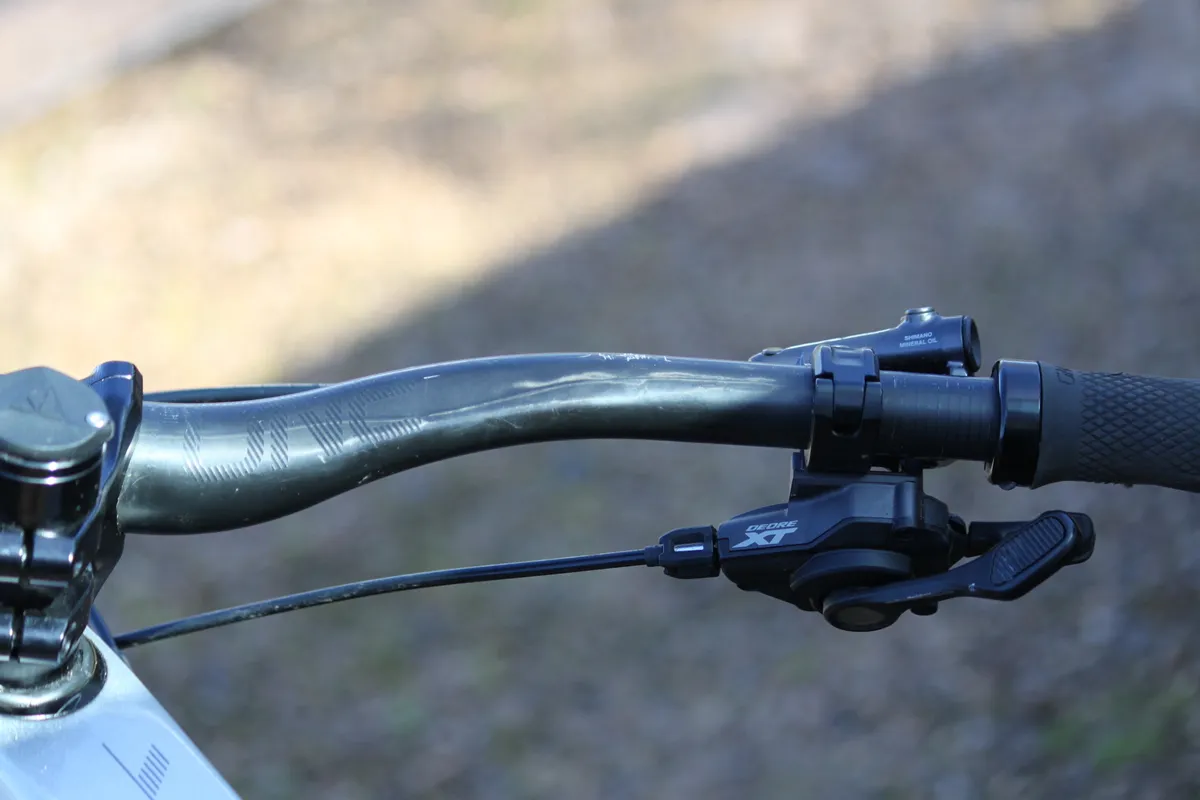
The Strive has plenty of positives, but it's not perfect. Out of the box, it's not the most user-friendly bike. The suspension needs a little refinement to help complement that stiff frame.
Expect a few changes in the next update as I strive to make the most of the CFR Underdog.
BikeRadar's long-term test bikes
BikeRadar's long-term test bikes give our team the opportunity to truly get to grips with these machines, so we can tell you how they perform through different seasons and on ever-changing terrain, through a year of riding.
Some choose a bike from their favoured discipline and ride it hard for a year, others opt for a bike that takes them outside of their comfort zone.
We also use our long-term bikes as test beds for the latest kit, chopping and changing parts to see what really makes the difference – and help you decide which upgrades are worth spending your money on.
These bikes also provide an insight into the team's riding through the year – how they like to ride and where life on two wheels takes them, from group rides on local lanes and trails, to adventures further afield.
To see all of the BikeRadar team’s long-term test bikes – and to stay up-to-date with the latest updates – visit our long-term reviews hub.
